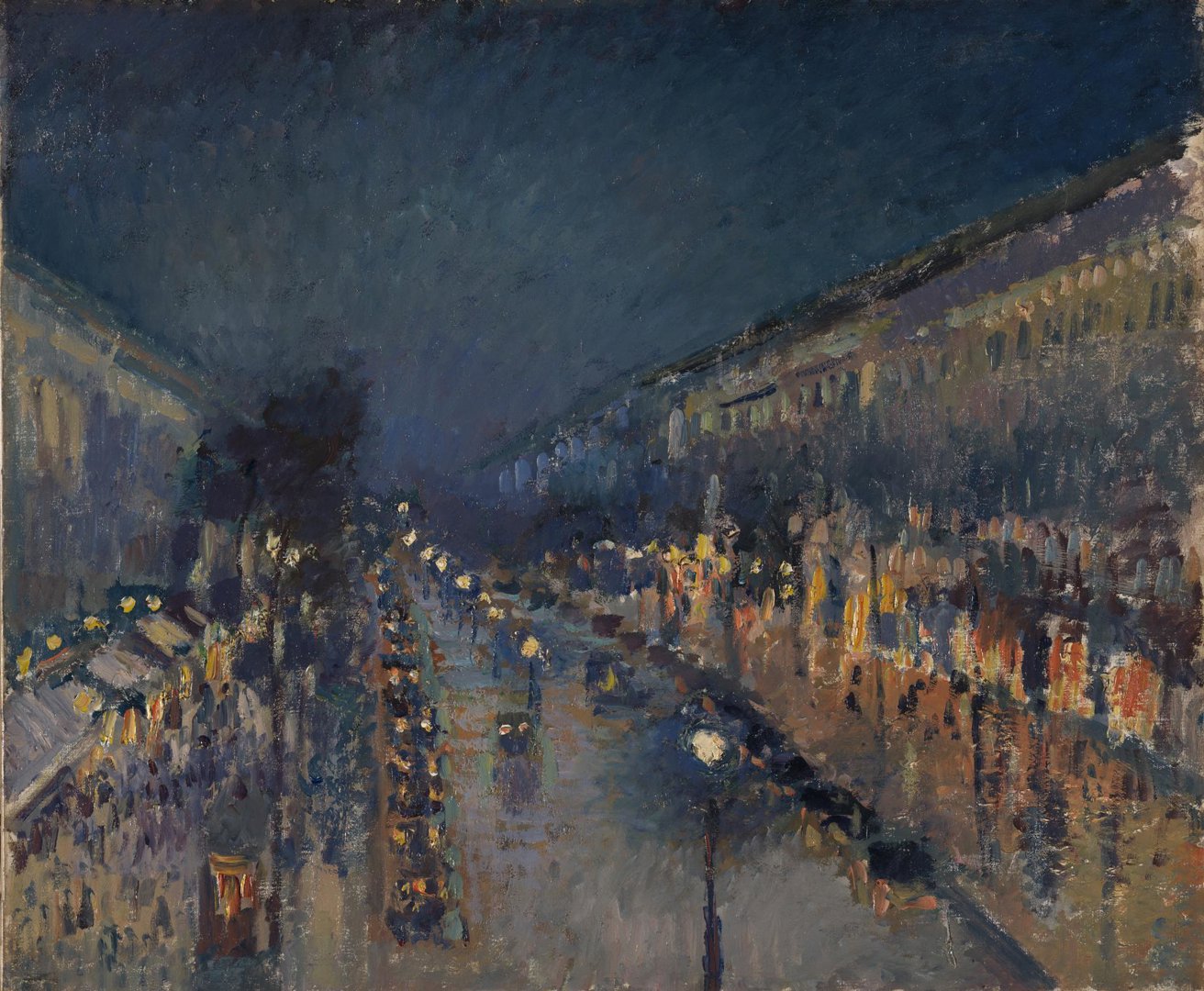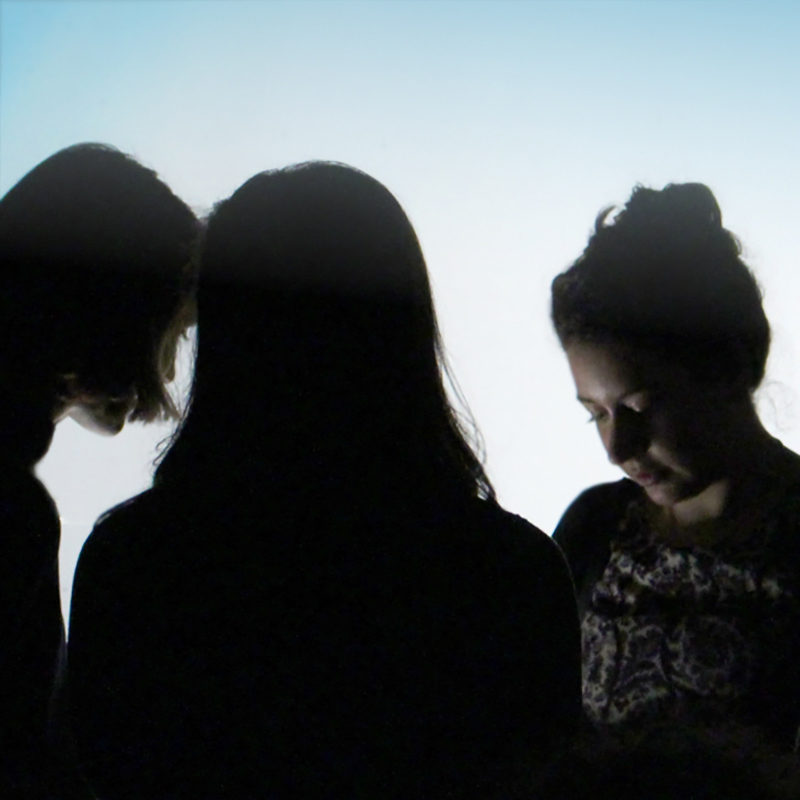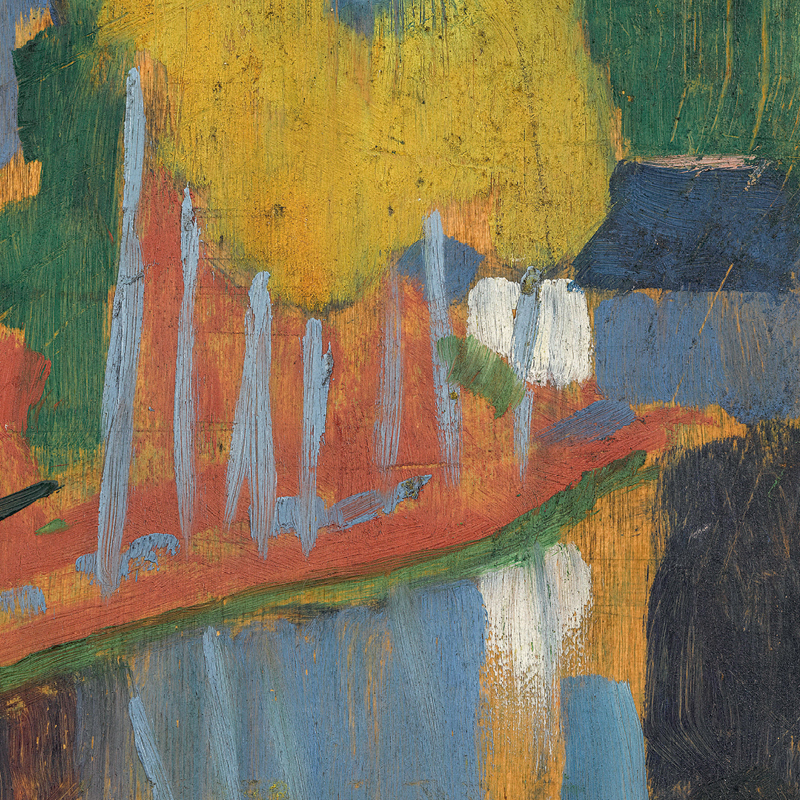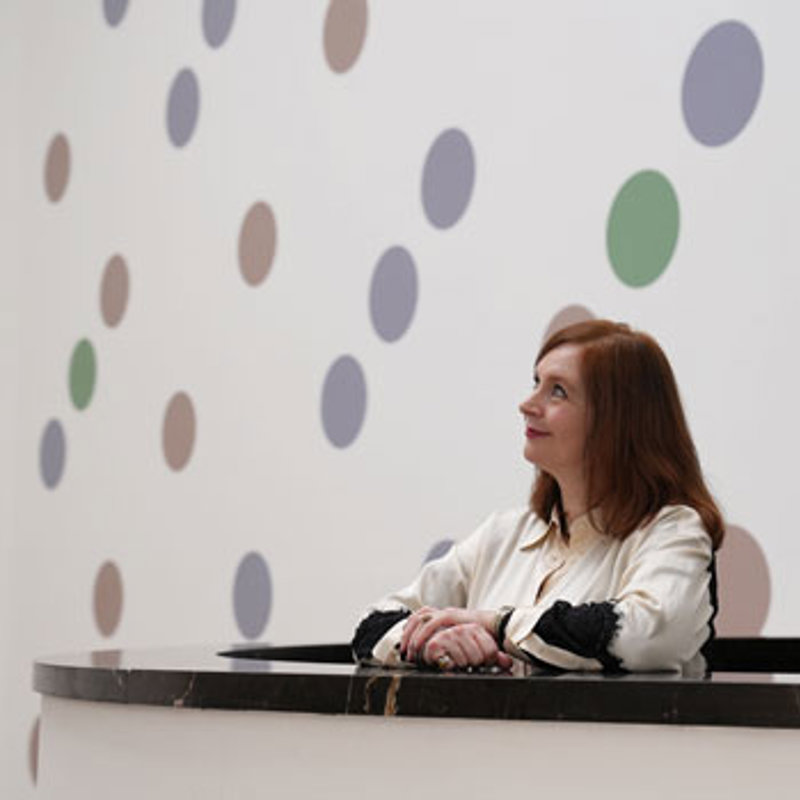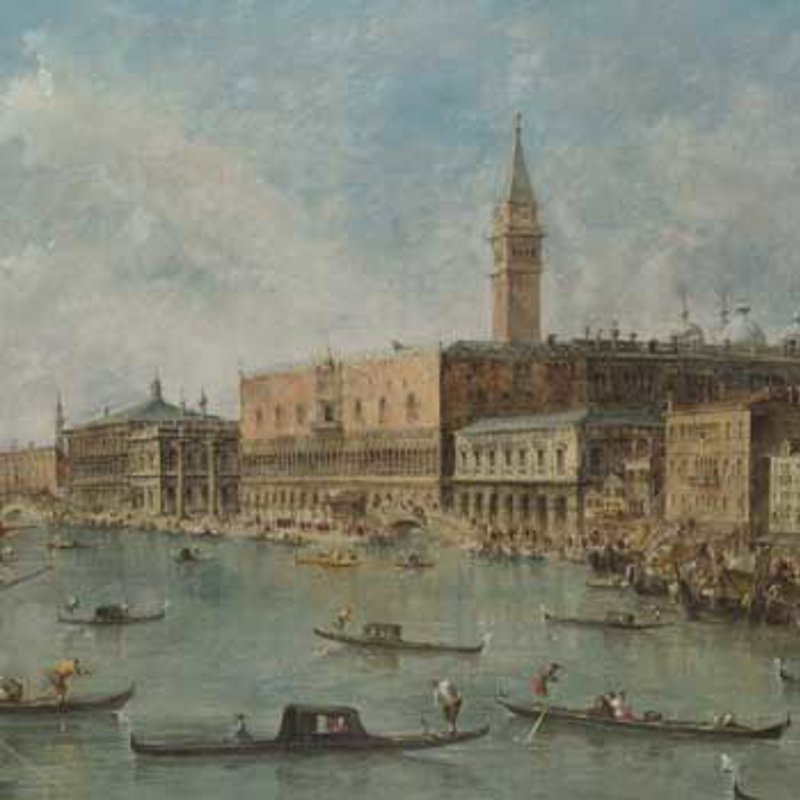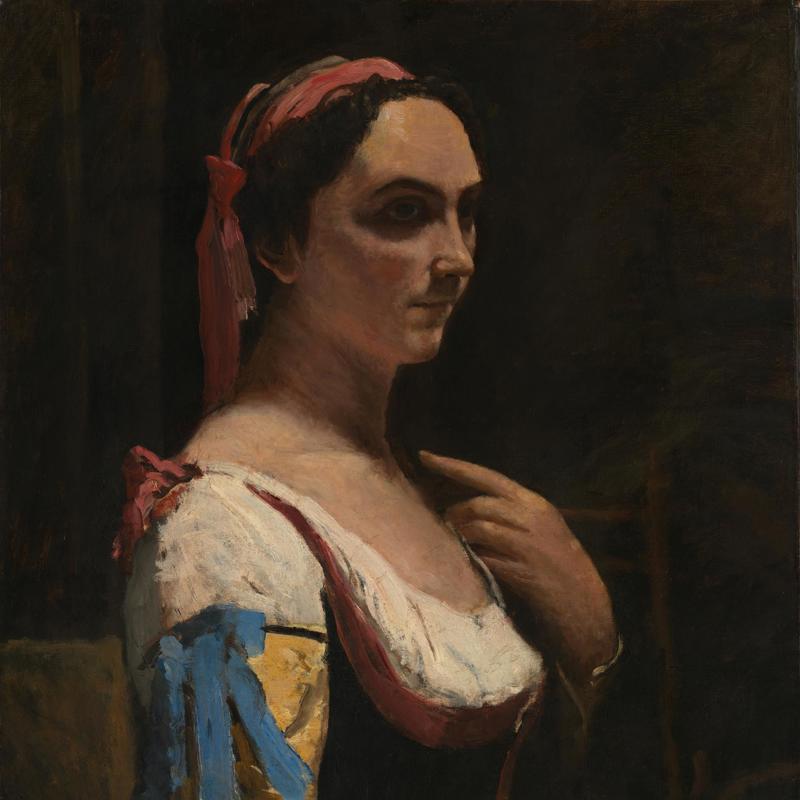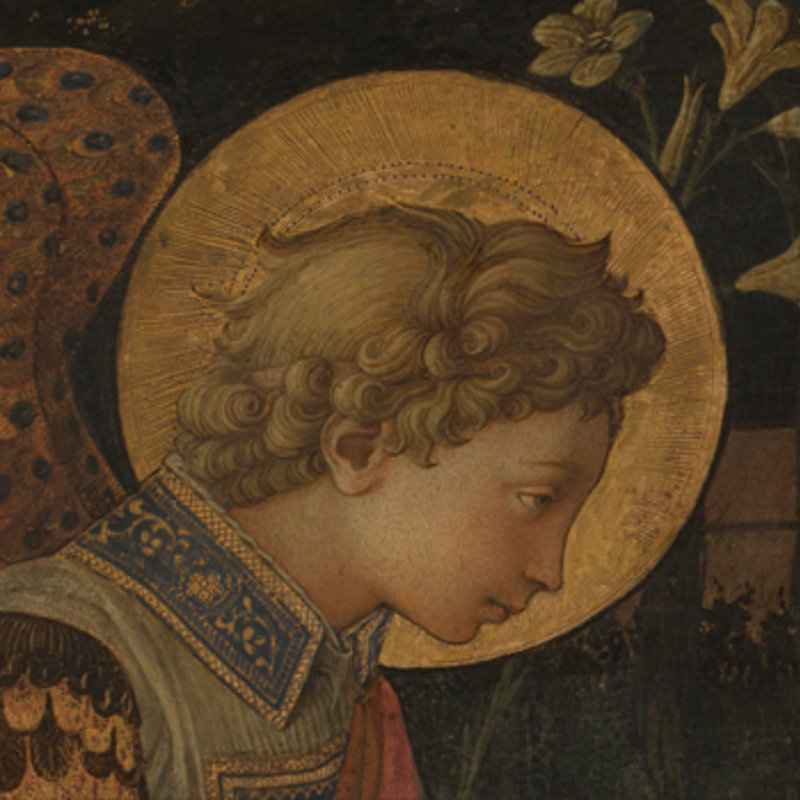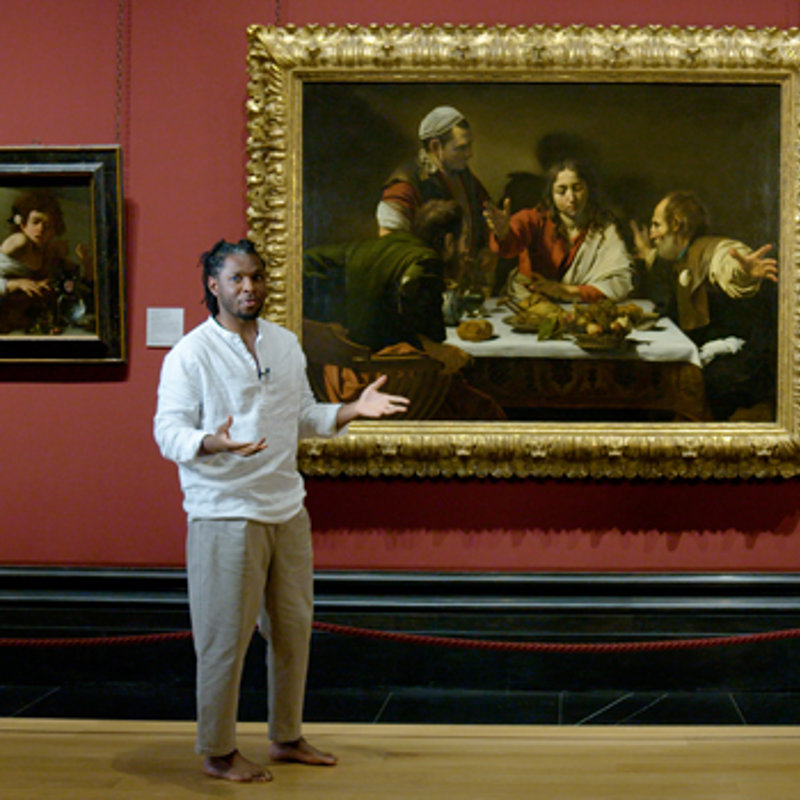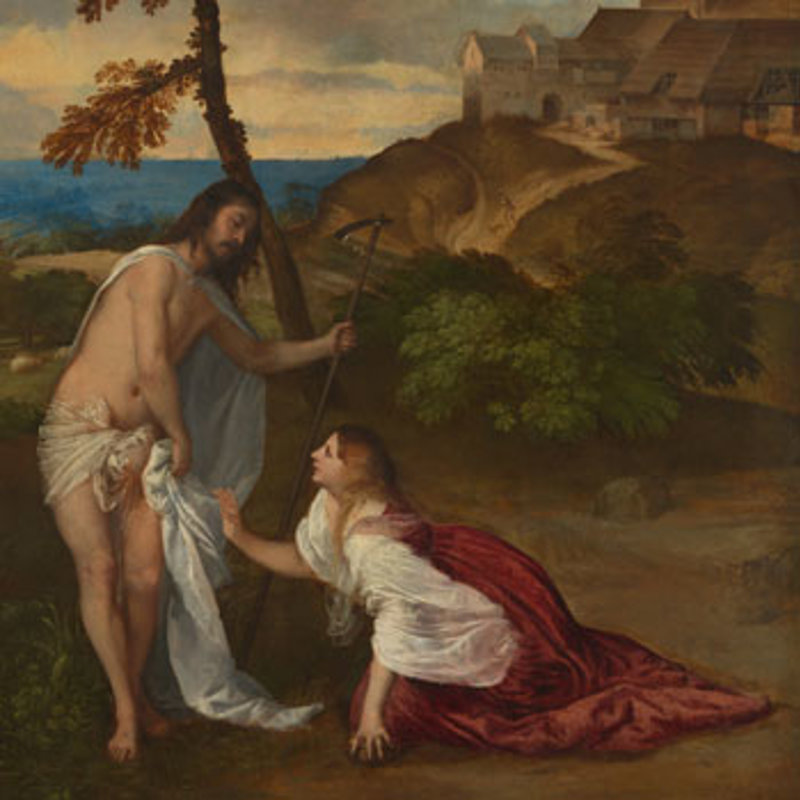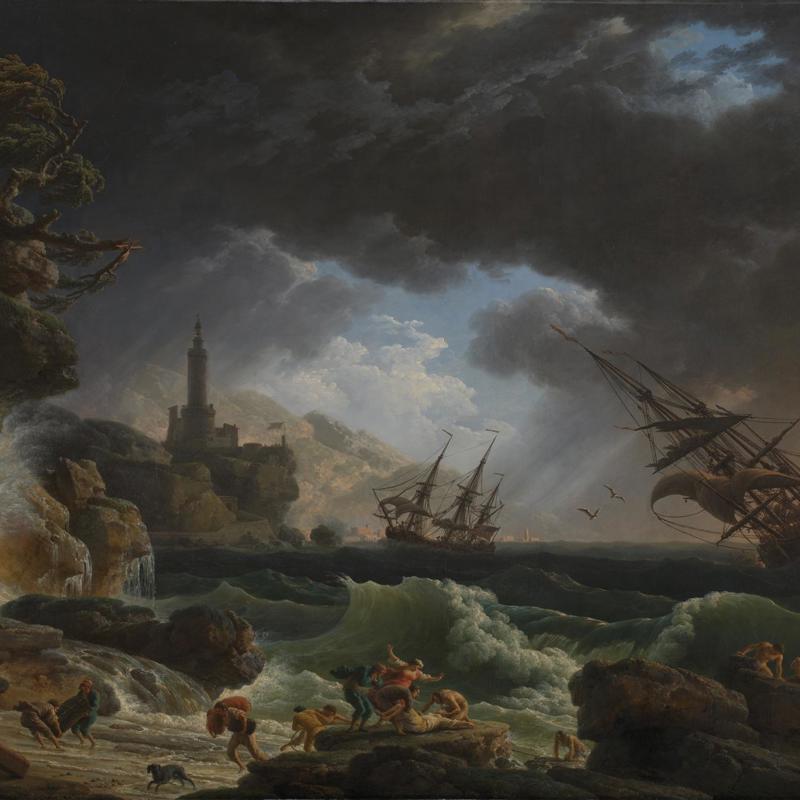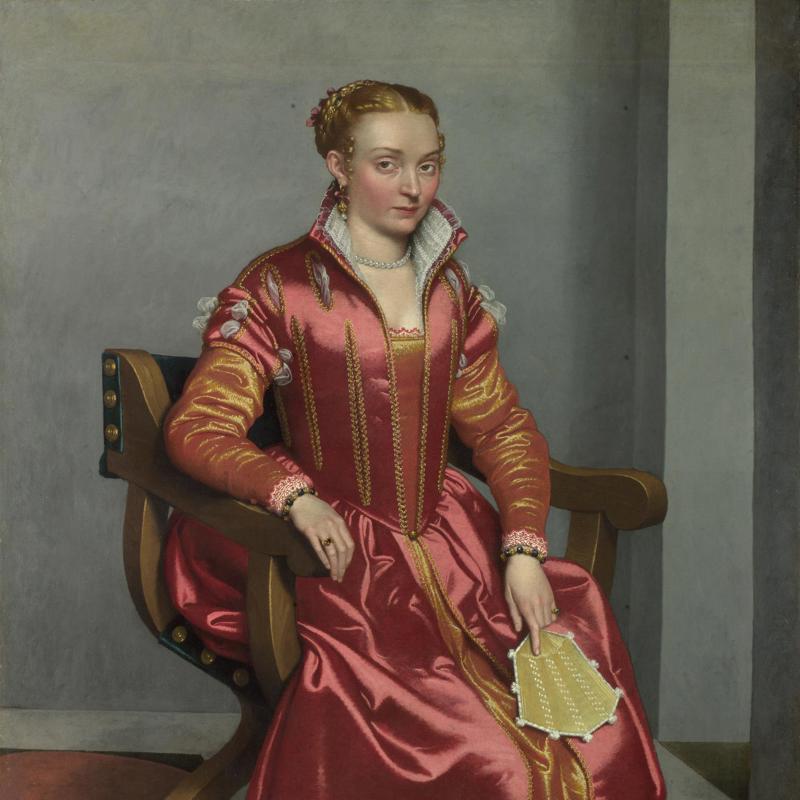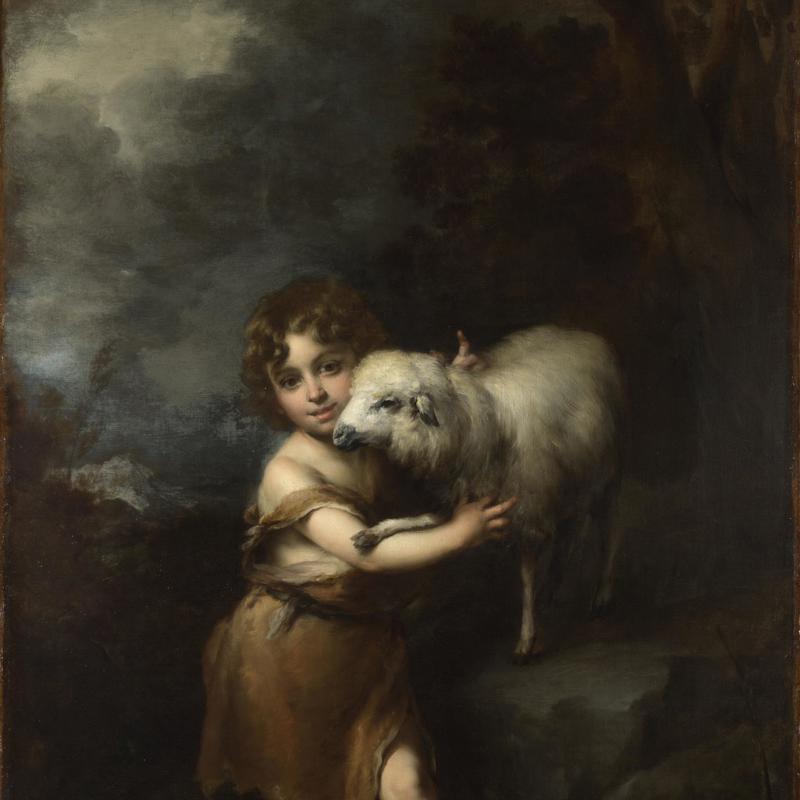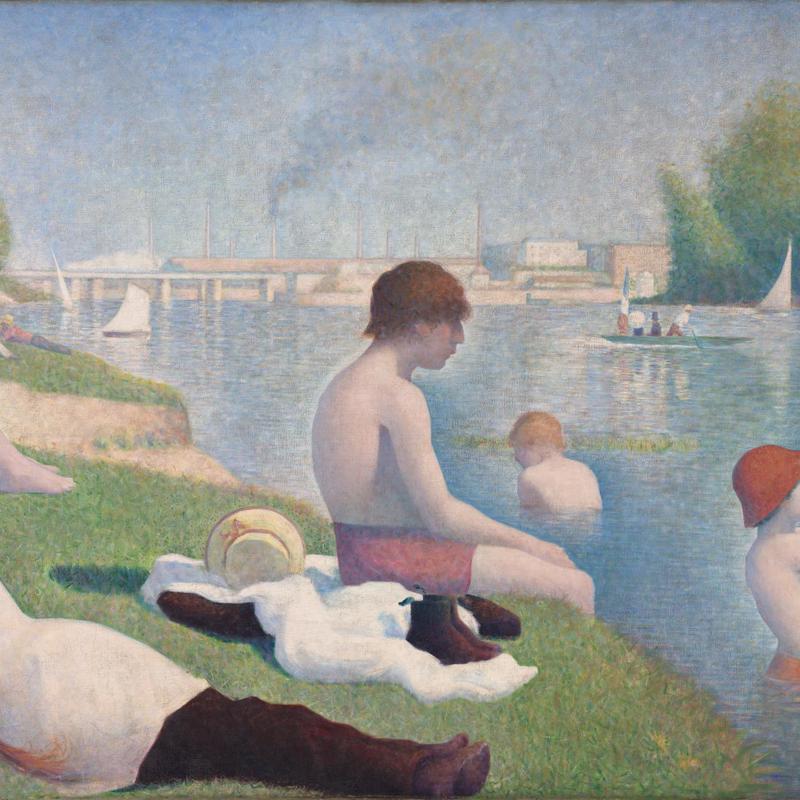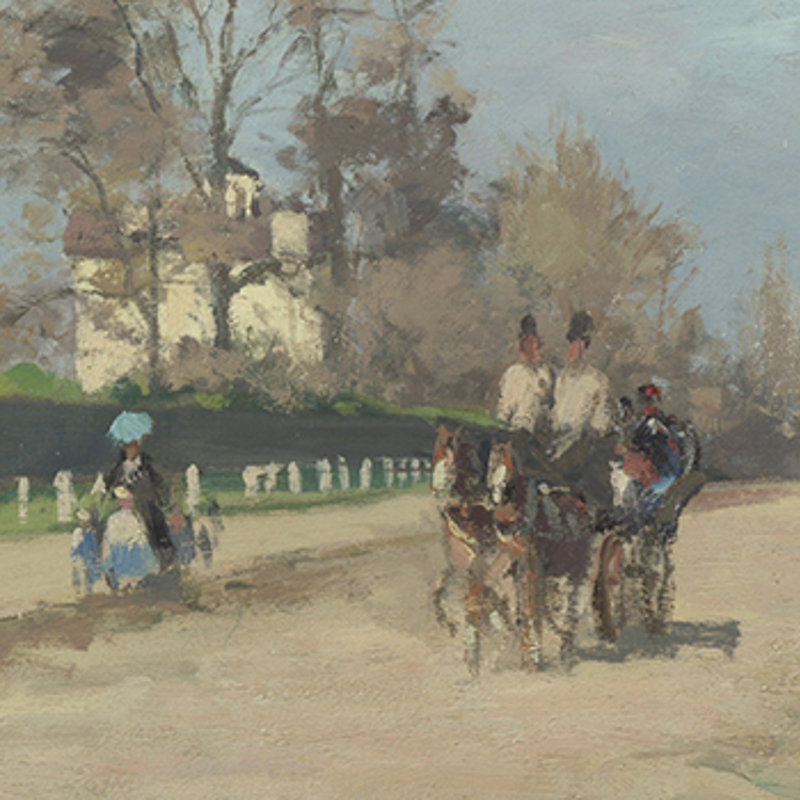We are looking down at a shimmering play of light across the Boulevard Montmartre, one of the wide tree-lined avenues, in the area still seen as the glamorous heart of Paris.
Pissarro was painting from his room in the Grand Hôtel de Russie, which gave him a long vista, almost ‘up to the Porte San Denis’, as he wrote to his son Lucien.
Although the composition is formed from almost abstract coloured brushstrokes, it is firmly constructed around the diagonals of the receding pavements and roof lines which meet just left of the painting’s centre.
It is a rainy night scene, but far from being chilly or bleak, city lights glow, causing endless reflections on the damp road and pavements. Running down the centre of the avenue, a procession of tall lampposts bear electric lights; a modern addition to the city, installed in 1878. Blue brushmarks encircle each glowing orb, emphasising the cool, harsh quality of the lamps’ artificial light, in contrast with the warm gaslight of the shop windows.
Despite the weather, the wide pavement throngs with pedestrians. Those gazing in the brightly-lit shop windows might have some protection from the awnings overhead. Others mill and stroll, their restless movement suggested by Pissarro’s swift dabs of purples, lilacs and blues.
On the right, lights from the Théâtre des Variétés glow even more brightly: searing oranges and yellows against complementary blues, which create extraordinary reflections on the adjacent pavement.
Lines of carriages are pulled up at the kerbs on either side; their dark shapes illuminated by the little globes of their oil lamps. The carriages give us a sense of the movement of a modern city as they hover, ready to take their occupants home or on into the night
Pissarro painted this view from his hotel room between February and April of 1897. Of the 14 views he produced, this is the only night scene, and in fact, the only night scene he ever painted. Here, the plunging ‘V’ of the night sky captures the urban glow of the city, and the whole composition has a visionary quality.
Although he lived in the city as a young man, Pissarro spent most of his career in the countryside outside Paris. This return to the city as subject matter later in his life (he was in his late sixties at the time) seems to have brought him renewed inspiration.
An eye condition forced Pissarro to paint from inside rather than 'en plein air', but he has taken full advantage of his elevated viewpoint. While his landscapes are about light and colour, they are also about people: their lives and experiences, so we, as viewers, can imagine ourselves down in the crowd amongst them.
Digital activity at the National Gallery is supported by Bloomberg Philanthropies Digital Accelerator




